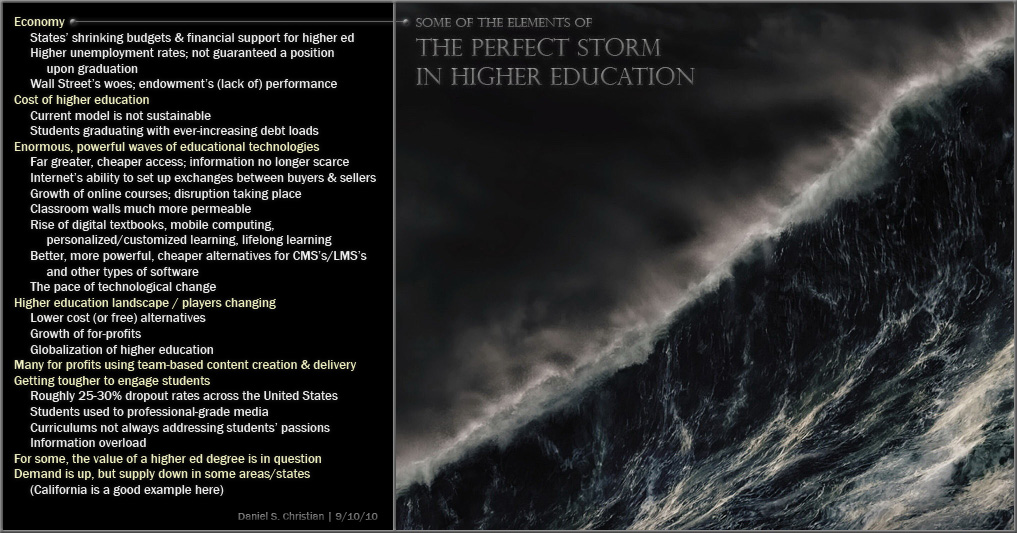Below are the concluding paragraphs of Introducing Bennett Hypothesis 2.0 [by Andrew Gillen, Center for College Affordability and Productivity, with emphasis below from DSC)
Original Bennett Hypothesis + a couple refinements + Bowen’s Rule = Bennett Hypothesis 2.0.
The original Bennett Hypothesis held that increases in financial aid will lead to higher tuition, but the empirical evidence testing the hypothesis is inconclusive. The next generation of the concept, Bennett Hypothesis 2.0, adds three refinements.
1. All Aid is Not Created Equal
2. Selectivity, Tuition Caps, and Price Discrimination are Important
3. Don’t Ignore the Dynamic Story
These three refinements not only help explain the mixed empirical evidence, but also provide a better understanding of the relationship between financial aid and tuition. While the first two refinements weaken the link between the two (lessening our concern about Bennett Hypothesis 2.0), the third refinement strengthens the link, implying that we should almost always be concerned about financial aid leading to higher tuition.
Given the current structure of the higher education system, Bennett Hypothesis 2.0 implies that the government will always be fighting a losing battle to increase access to college or improve college affordability since “additional government [financial aid] funds keep providing revenues that, under the current incentive system, increase costs.”54 As higher financial aid pushes costs higher, it inevitably puts upward pressure on tuition. Higher tuition, of course, reduces college affordability, leading to calls for more financial aid, setting the vicious cycle in motion all over again.
Bennett Hypothesis 2.0 exacerbates rather than causes out of control spending by colleges, the ultimate cause of which is Bowen’s Rule. Nevertheless, that is no excuse for ill-designed financial aid programs to pour fuel the fire. As Bennett noted:
“Federal student aid policies do not cause college price inflation, but there is little doubt that they help make it possible.”55
Those words remain just as true today as they were a quarter century ago.
From DSC:
This report seems to show that the current system is only serving to expand the higher ed bubble even further; surely a pop will be heard in the future (if it hasn’t already at some individual colleges and universities). Such a financial aid system seems to be causing one of the elements of the perfect storm — the cost of higher ed — to mount its waves to an even higher level. (Keep in mind I created the image below in September 2010, but many of these forces are still with us today.)









